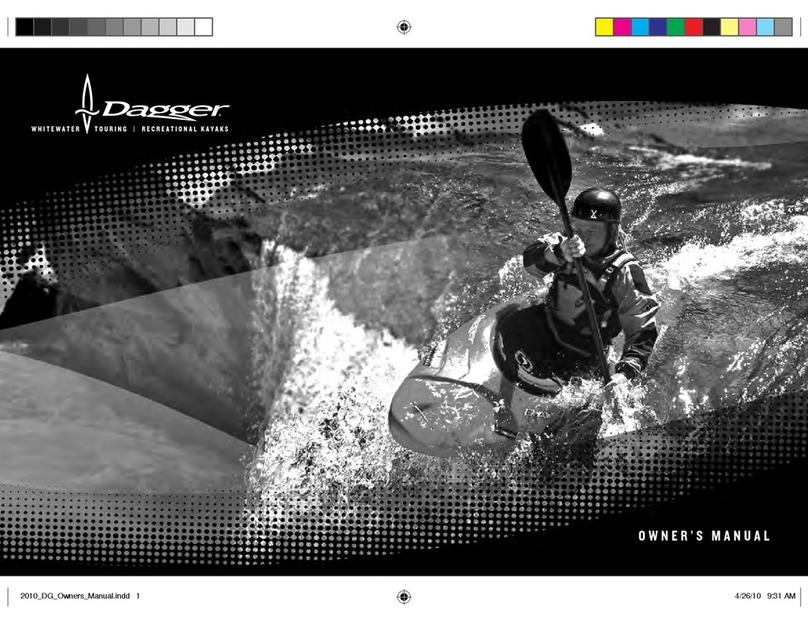
7
OUTFITTING: SEAT
CREEK SEAT ADJUSTMENT HIP PAD ADJUSTMENT
For ultimate strength some Dagger whitewater
boats are fitted with the creek seat.
1 Loosen, but DO NOT remove, five seat adjust-
ment screws.
2 With both hands, slide the seat assembly fore or
aft to the desired location.
3 Tighten five adjustment screws securely.
For increase your contact with the boat, the
hip pads can be adjusted.
1 Disconnect two buckles.
2 Swing hip pad upward.
3 Insert foam padding into the pocket on the back
of the hip pad.
4 After you have inserted as much foam padding
as desired, reseal and lower hip pad and Velcro®
into desired position, FASTEN BOTH BUCKLES,
and tighten the straps.
5 Stow the straps by wrapping them back behind
the buckles and fastening to the Velcro® tabs.
6 Never allow your outfitting to impair exit in an
emergency.
Seat
adjustment
screws
Seat
adjustment
screw
Seat
adjustment
screws
PLAY SEAT ADJUSTMENT
For lightweight connection some Dagger
whitewater boats are fitted with the play seat.
1 Unfasten the upper back band straps.
2 Loosen the seat adjustment knob by turning five
to six times but DO NOT remove it.
3 With both hands positioned as shown, press
down on the rear adjustment knob and slide the
seat assembly foward or back.
4 Tighten the adjustment knob securely.
5 Fasten both upper back band straps.
Foam pad
Hip pad
Buckles





























